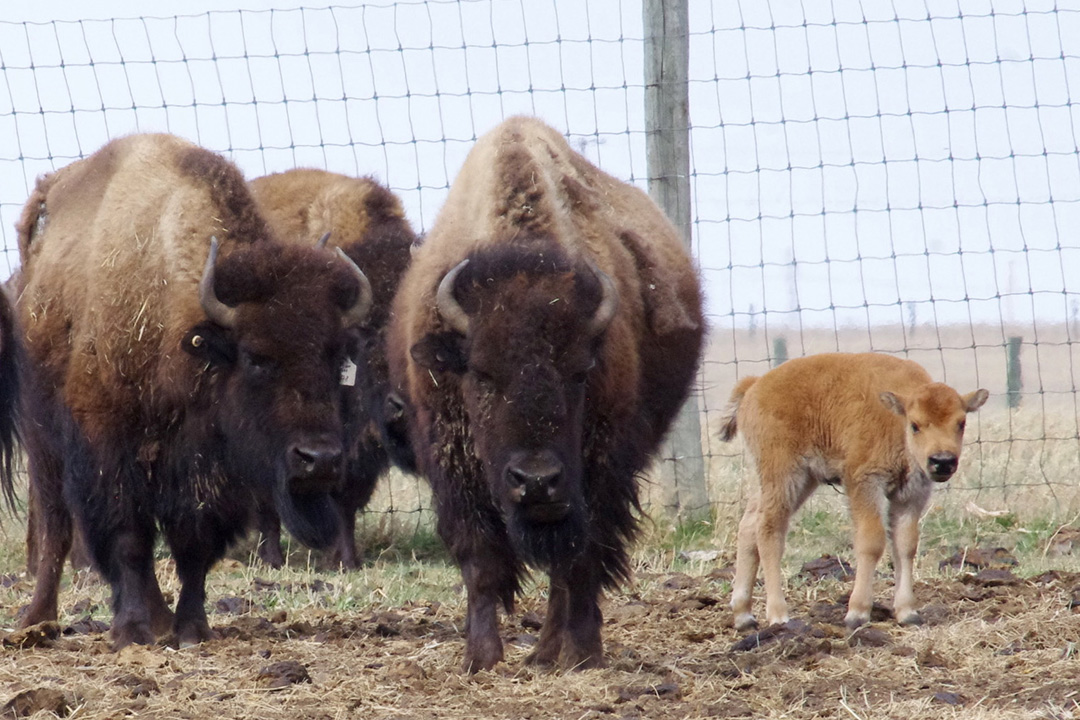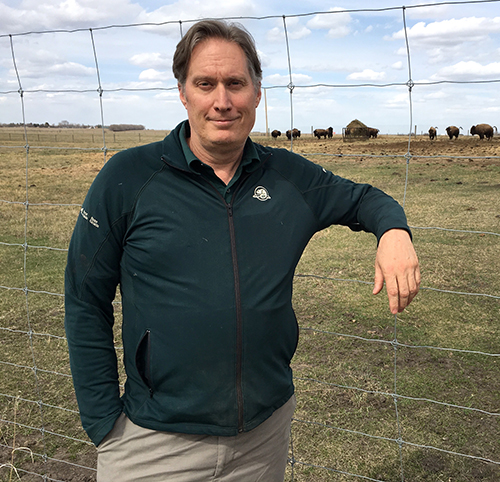
TB in bison studied at LFCE and VIDO-InterVac
A Parks Canada scientist is conducting research at the University of Saskatchewan (USask) on bovine tuberculosis in bison to improve diagnosis of the disease and to develop better vaccines.
By Lana Haight“It’s a difficult issue because there are no easy answers and there are no easy fixes,” said Dr. Todd Shury (PhD), a national wildlife health advisor in the Office of the Chief Ecosystem Scientist with Parks Canada. Shury is also an adjunct professor in the Western College of Veterinary Medicine at USask.
Shury said it’s an issue that needs to be addressed for the conservation of wild bison herds and to protect the cattle and commercial bison industries. Canada is considered free from bovine tuberculosis, and a TB-control program for cattle has been in place since 1924.
“We’ve worked hard to achieve that status. The bison in northern Canada are the last remaining wildlife reservoir of TB in Canada,” said Shury.
Straddling the Alberta-Northwest Territories border, Wood Buffalo National Park is home to bison herds that include TB-infected animals.
To do nothing could jeopardize Canada’s status as being free from bovine tuberculosis, Shury said. The disease could spread to nearby disease-free bison herds and to cattle ranches in the area.

Bovine tuberculosis (Mycobacterium bovis) affects a wide range of mammals. It shares 99.95 per cent of the same genetics found in the type of TB that affects humans (Mycobacterium tuberculosis), but there are subtle differences between the two. There are no known cases in Canada of a person being infected with bovine TB from bison, although M. bovis is a significant human pathogen found elsewhere in the world.
In March, 24 bred female bison and one male bison from Elk Island National Park arrived at USask’s Livestock and Forage Centre of Excellence Goodale Farm, located southeast of Saskatoon.
When this spring’s bison calves reach six months of age, the animals will be moved to the Vaccine and Infectious Disease Organization-International Vaccine Centre (VIDO-InterVac)—a containment Level 3 facility for biosafety located on the USask campus. Shury will work closely with other research teams at VIDO-InterVac who are trying to discover new vaccines for bovine tuberculosis and a related mycobacterial disease called Johne’s disease, which mainly affects cattle.
The first part of the bison research will attempt to validate existing diagnostic tests for cattle and determine how well these tests perform in bison. The second phase will determine how well existing vaccines work to protect bison against bovine tuberculosis. The researchers will use two vaccines that have proven effective with cattle and other species, and they will study the animals’ immune response to determine which vaccine is most effective.
Shury hopes that this preliminary, lab-based research will guide the field work that needs to be done in Wood Buffalo National Park, to better manage or eliminate TB in the park’s bison herds.
Parks Canada and the Canadian Bison Association are funding this research.

